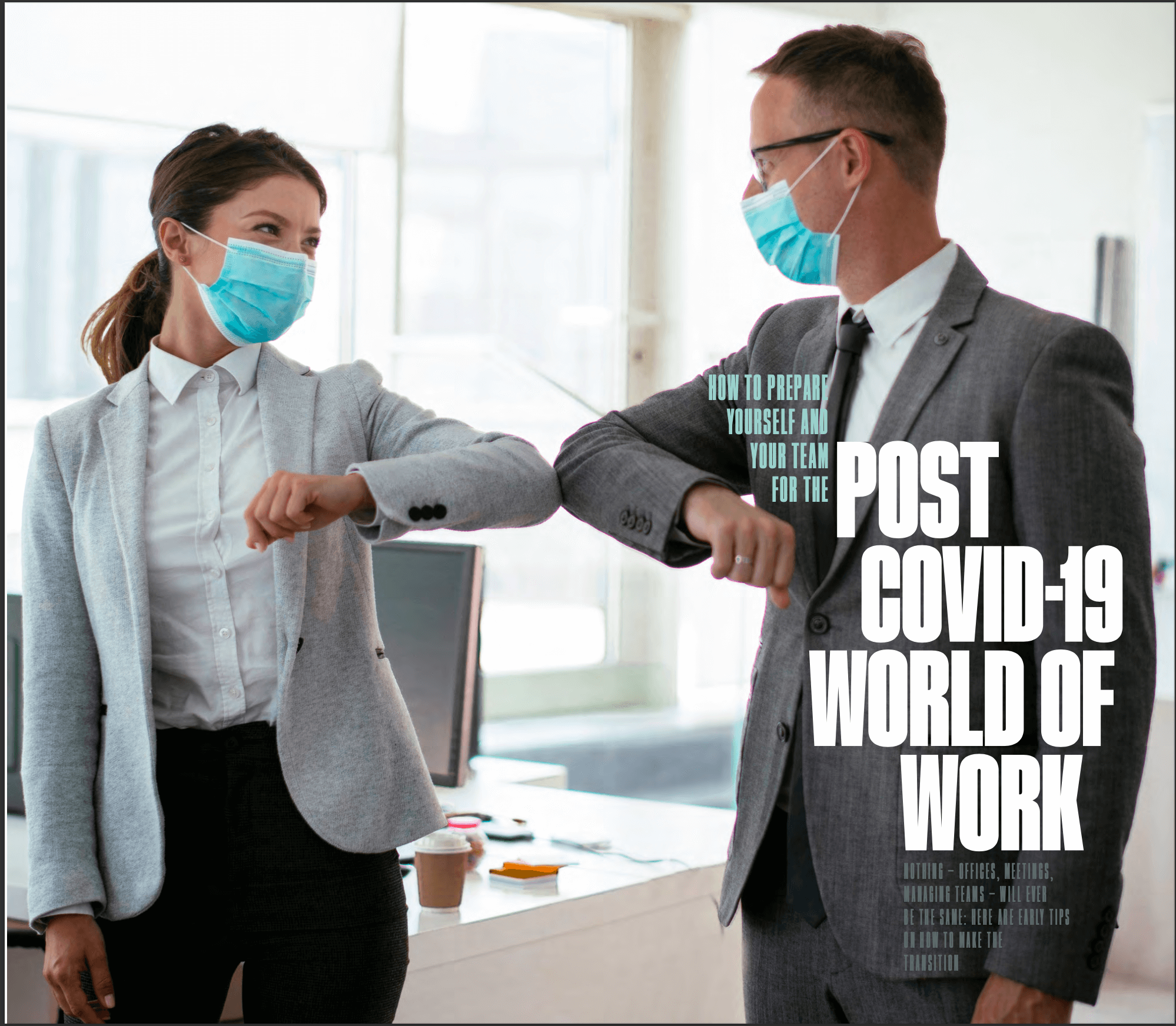
24 Jan The Post-Covid World of Work
Our world of work has changed radically and irreversibly. But you know that already. However, knowing and being ready are two very different things. Not to put too fine a point on it, but your own and your company’s success depends on you having a new mindset and new skill sets, whether you are a media company owner, executive, manager, or staffer. If your head isn’t in the right place, and if your skill sets aren’t up to the new world of work, the disruption, angst, and challenges of 2020 will only get worse. This moment in time is unique, and we must seize it.
THE MANTRA IS “ACCELERATE”
“We spent the last 20 years talking about disruption,” wrote digital transformation expert Lucy Keung in her late 2020 book, “The Transformation Manifesto”. “Now the word is ‘acceleration’,” she wrote. “The coronavirus crisis has accelerated structural shifts that have been underway for decades. We have seen eight years of changes in eight months. “Changes that were part of companies’ midterm planning are now showing up in forecasts for the next 12 months,” she wrote. “This rapid acceleration has dramatically shortened the runway for digital transformation.
“THIS IS A RESET MOMENT”
“This is a reset moment,” Keung wrote. “Organisations are unfrozen. People are expecting change. You have a cover. There will never be a better time to tackle deeper changes that need to happen. “This is an unmissable opportunity to propel forward digital transformation initiatives,” she wrote. “Shame on us if we don’t seize this opportunity.“ The challenge now is to define priorities for the next stage. “We have the chance to reboot, to accelerate digital transformation and rethink organisations to fit a future that will now be with us much faster than we had expected,” Keung concluded. “This chance will not come again and the window is already starting to close. It is time to be bold.”
WHAT DO YOU NEED TO DO?
What do you need to do to ensure that you and your company not only can continue to survive but also actually thrive in this new world? How do we minimise the negative impact of the disruptions and maximise the positive changes that have been thrust upon us and convert them into our new workplace best practices, not the least of which will be a permanently hybrid workforce where staff will be dividing their time between home and the office? It starts with leadership, from the top down. “The radical flexibility inherent in hybrid workforce models delivers a host of good outcomes — but only if your leadership has the mindset to champion hybrid work,” wrote the authors of a January 2021 report by global research firm Gartner. “A hybrid workforce model offers the kind of radical flexibility required to build organisational resilience, but does your organisation have the leadership mindset and skills to capture the opportunity?
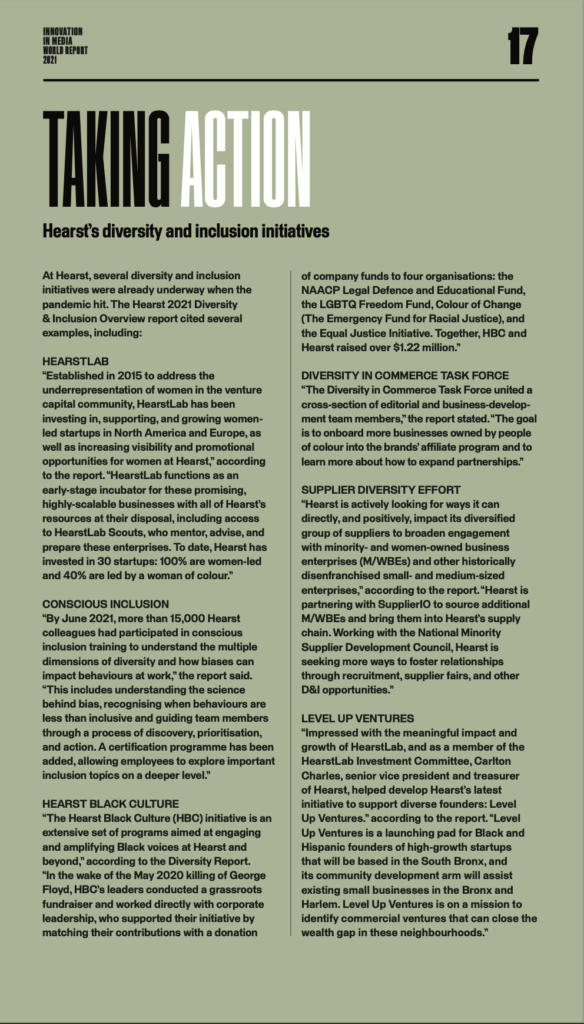
OLD IDEAS FRUSTRATE CHANGE
“Many business leaders still question the merits of this nontraditional workforce model, but often because of common myths and old ideas about what a hybrid workforce model is, and where, when and how employees perform at their best,” according to Gartner. “More employees go above and beyond at work when organisations give them a choice over where, when, and how much they work,” said Gartner Director Sasha Tuzel. “But those benefits can only be captured when leadership is willing and able to reimagine how we work and communicate, without sacrificing the company culture and collaboration.” Leaders who are ready to embrace the new
hybrid workplace model don’t see it as a risk, and they don’t force their people to return to the old-fashioned office-based model. Hybrid Ready leaders embrace the changes as an opportunity to increase staff happiness, engagement, commitment, and productivity.
MANY LEADERS ARE NOT READY FOR A HYBRID WORLD
Flexible, hybrid-ready leaders are not yet the norm. A vast majority (78%) “of HR leaders identified leaders’ mindsets as a greater challenge than their skill sets in driving the success of a hybrid workforce model,” according to the Gartner report. “The skill sets required in a hybrid-ready leader include the ability to build trust, empower employees, enable collaboration, and establish productive team climates.” Gartner identified four types of hybrid leaders:
1. Hybrid champions: Leaders with the right mindset and skill set to lead a hybrid workforce.
2. Hybrid strivers: Leaders who have the right mindset but lack the right skill set to lead a hybrid workforce.
3. Hybrid resistors: Leaders who have the right skill set but a closed mindset toward a hybrid workforce.
4. Hybrid laggards: Leaders who lack both the right mindset and the requisite skill set for leading a hybrid workforce.
Gartner also identified the skill sets of a hybrid leader. A hybrid leader must:
Drive performance, even when teams are remote, without close monitoring or supervision.
Champion development to ensure that employees are equipped with the skills and physical tools needed to drive current and future performance.
Communicate effectively across a variety of channels to lead virtual and in-office teams.
Enable enterprise contribution, connecting remote workers with their in-office and otherwise dispersed peers and supporting them all to drive high enterprise performance and contribution.
Foster inclusive team climates, independent of employees’ choice of work location.
Build trust and psychological safety so that dispersed workers feel safe to share their challenges for collective problem-solving and feel they have the same opportunities for participation and advancement.
Establish team culture and norms throughout in-office and remote teams.
Let’s take a look at what needs to change and how in terms of your office, your teams, and your meetings, as well as your diversity and gender equity efforts.
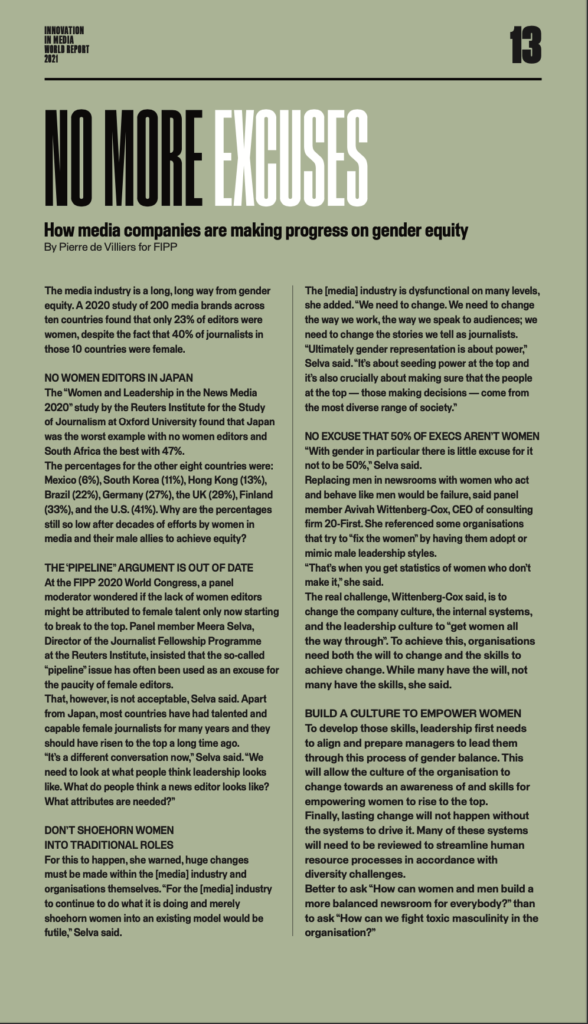
PERMANENT WORK FROM HOME GIVES WAY TO HYBRID
While lockdowns made working from home (WFH) five days a week unavoidable, it cannot stay that way, especially in creative organisations like media companies. Human beings are social animals, and journalism is a social process, both in the gathering of the information and the creative process of crafting the presentation of that information. Ditto sales and marketing. While some workers have blossomed working from home, a recent survey also uncovered a worrisome decline in mental health across all industries, seniority levels, and demographics. Before the pandemic, 62% of employees reported positive mental health. By late 2020, that number had dropped to just 28%, according to the report by the Martec Group, a global strategic intelligence and market research solutions company. Job satisfaction and job motivation had also fallen — job satisfaction from 57% to 32% and job motivation from 56% to 36%, according to the report.
PERMANENT WFH IS NOT THE “NEW NORMAL”
“For a business like ours, which is an innovative, collaborative apprenticeship culture, this is not ideal for us,” Goldman Sachs CEO David Solomon told a conference in late February 2021. “And it’s not a new normal. It’s an aberration that we’re going to correct as soon as possible,” he added. Other finance sector executives agree with Solomon. In the autumn of 2020, JP Morgan CEO Jamie Dimon said WFH has negatively impacted productivity. Barclays CEO Jes Staley recently said he hopes employees will be returning to the office after the vaccine has been widely distributed. On the other hand, the tech industry is embracing WFH now and in the future. The giants — Microsoft, Facebook and Twitter — have all told their staffs that they will have the option to work from home permanently. Up to half of Facebook’s staff could work remotely within five to ten years, according to the company. Those companies are in the majority. Eight out of ten companies surveyed by 451 Research reported that they have implemented or expanded universal work-from-home policies as a result of COVID-19. Remarkably, 67% of those companies said they would keep their WFH policies in place either permanently or for the long-term, according to 451 Research.
HYBRID IS HERE TO STAY
But the answer isn’t an either-or choice; the answer is a hybrid approach. “The work from home craze is not hyped,” wrote Gene Marks, CEO of the tech and financial services company Marks Group PC. “It’s just overhyped. “Every business needs to have a work-from home policy and if you didn’t learn that from the pandemic then you are definitely missing the boat,” Marks wrote in The Guardian. “Giving employees some flexibility to do their jobs remotely not only improves their job satisfaction but creates a great recruiting tool for those younger employees who have been demanding this benefit for years. Clearly the technology works and, depending on the person, your productivity should not suffer. “But work-from-home policies need balance,” Marks wrote. “I’ve seen from many successful clients that a good policy requires a certain number of days every week in the office. There has to be physical presence. You need to see that worker and that worker needs to see you and his or her colleagues. You can’t create a team when everyone’s completely virtual. Something is missing. Human contact is missing. Technology just can’t replace that. Don’t worry, your dog will be fine.”
WHO WILL BE THERE?
“We’re just not going to go back to five days a week in the office,” Deloitte’s Global Human Capital Leader Erica Volini told The Washington Post. “The idea that we’re going to get to some new consistent way of working flies in the face of what we’ve learned in the pandemic.” What is here to stay is the end of nine to five, Monday-through-Friday working hours. This pandemic has changed the 40-hour a week office-based experience forever. Flexible versus fixed working hours will be the biggest change media firms have to adjust to going forward. Some people may do three days a week remotely, some two days, some four and so on. “All-remote-all-the-time is not healthy, especially in media, where the creative process needs to happen in person,” Liz Vaccariello, Editor-In-Chief of Real Simple at Meredith, told DigitalContentNext. “But as a creative lead, I don’t see the need for office hours to be Monday to Friday, nine to six. It’s just inefficient. Twice a week is good enough!
TRUST YOUR STAFF TO GET THEIR WORK DONE
“Working during this pandemic is just about getting work done when you can,” Vaccariello continued. “You have to trust your staff to get their work done, at a time that fits in with their home life. “Giving them more autonomy, rather than constantly checking if they are online, will cultivate a culture of trust, respect and ultimately hard work,” Vaccariello told DigitalContentNext. “The work will speak for itself. If a team member can get their work done in five hours, good for them!” So, how do you manage a hybrid system? How many days? Which hours? For whom? Do teams need to be in the office on the same day?
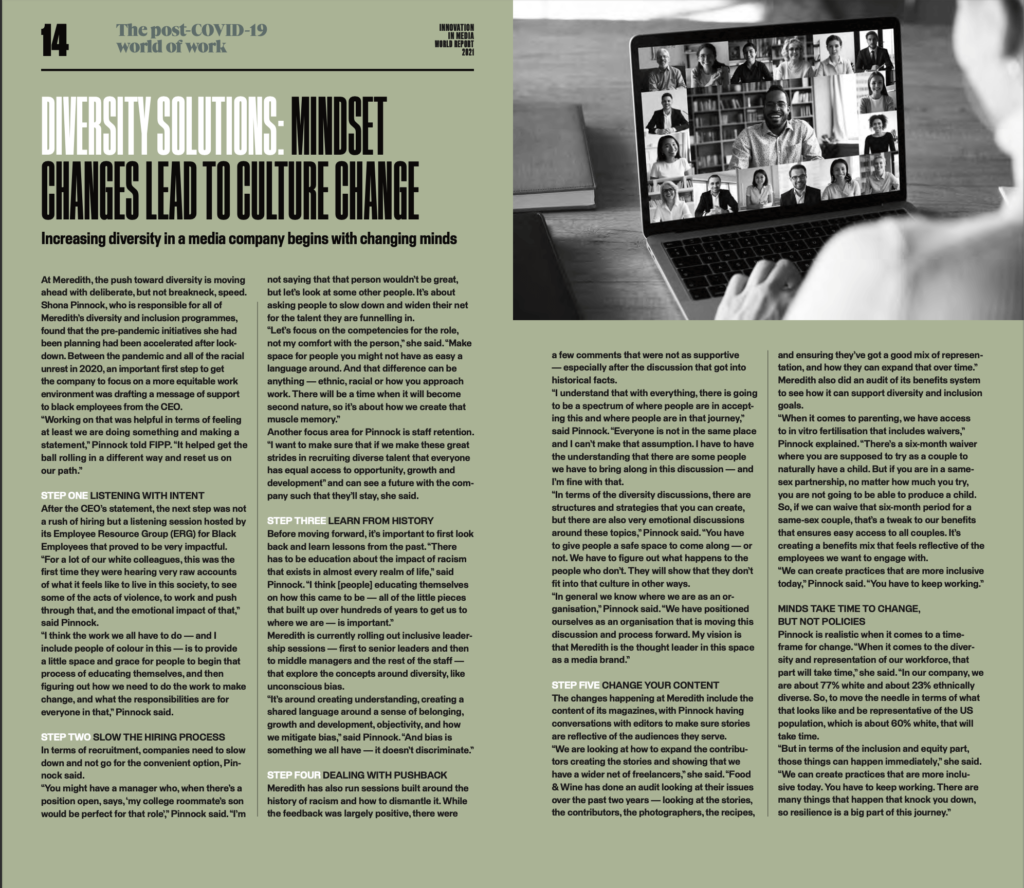
HYBRID AIN’T EASY
Hybrid workplaces will not be easy to run; they will require an unprecedented amount of coordination. “Someone going to the office on Tuesdays and Thursdays, for example, will want to make the most of their time and we need to ensure their teammates will also be there,” Liz Burow, former WeWork VP/Workplace Strategy, told The Washington Post. “I think you’ll hear a lot more about H.R. departments saying we have ‘no meeting Mondays’ and very clear, intentional days of the week [for different activities],” Burow said. “You have to manage flexibility.” The innovations we need to make this transition are technological and organisational. What tools do we need and what organisational systems and behaviours must be in place? How do you have all these WFH flexible editors, designers, and sales teams collaborate seamlessly with the office team? One example of a technology solution is the BBC’s permanent open Zooms with key team members so they can be asked questions on the spot. It’s as close to working side by side that we can manage while accommodating remote working arrangements. There are literally dozens of tools teams can use to keep their WFH staff fully integrated with their office team (see the sidebar on tools for hybrid teams). After an initial period of intense safety precautions in offices, we envision the removal of plexiglass partitions and the creation of open team collaboration areas with lots of space as well as big screens to connect with remote team members.
WHAT DOES THE OFFICE OF THE FUTURE LOOK LIKE?
So, if we’re going the hybrid route, what kind of office will staffers be coming back to? We’re going to start with the office because, while handling your people is more important than handling your office building, the office seems to be top of mind for many executives and staffers, and the office structure sets the tone for interpersonal interactions in so many ways. What will the post-COVID-19 office look like? How will we operate while we’re there? Who will actually be there? We don’t yet have all the answers, but we do know it can’t and won’t be the same. What does an office look like that can accommodate the new hybrid working arrangements as well as meet health and safety concerns? “Well, for one thing, media companies are looking at models where existing offices serve as collaboration hubs, or essentially permanent WeWork-like office spaces where employees may meet to collaborate as needed,” wrote Andrew Filev, founder and CEO of collaborative tools company Wrike, on Forbes. “Both of these models can put existing office space to use while also accommodating the flexibility of work from home that employees have become accustomed to during the last several months.”
WHAT WILL THE NEW OFFICE LOOK LIKE?
“With individual workstations effectively relocated to people’s kitchens and living rooms, offices are being reconfigured as places that primarily exist for teamwork and collaborative activity — albeit with strict social distancing measures in place and partitions separating different teams and departments,” according to digital workflow company Service Now. “Architects and office planners are already busy with a raft of changes, including larger desks and layouts that make more use of stairwells to reduce the use of enclosed lifts. And, of course, there’s the ongoing drive to minimise the use of frequently touched surfaces, such as taps, door handles and buttons. “Within the office, new technologies are being adopted to enable more rigorous safety protocols,” according to Service Now. “Companies are shifting to touch-free sensor technology for handles, buttons and taps, signalling a reverse from the preponderance of pre-Covid touchscreens. Some planners are even looking at technology that will allow staff to control lifts and vending machines using their personal smartphones.”
TEAM-BASED WORK IN PODS
To accommodate both safety concerns and the increasingly common team-based approach to work, open-space offices will give way to more team pods. Workplaces originally designed to bring teams closer together now must keep them apart, at least in large numbers in wide open spaces. Discussions among designers include one way hallways, distance markers, staggered shifts, fewer desks, team pods, plexiglass divider screens, touchless functions like coffee machines and doors and even elevator panels controlled from your smartphone. There is no guidance to make the transition easier. Most national and local governmental regulatory bodies and industry groups offer little or no guidance or regulations (yet). It’s a blank slate, with high stakes. There are no precedents, either.
A GLIMPSE OF THE FUTURE
A good, if possibly premature, case study is the experience of R/GA, a San Francisco-based global advertising and marketing agency with 100 employees. In the spring of 2020, with their expensive downtown lease expiring in August, R/GA had a decision to make. The new remote working system was proceeding famously, with 30% of supervisors saying that their workers were more productive at home and only 7% saying people were getting less done, according to the company. Between the cost of staying and the success of remote working, R/GA’s decision was not very difficult. “We said, ‘Let’s pull ourselves out of this lease, go fully virtual, and treat the office like we would treat any client project, where we start from a blank slate,’” David Corns, the California managing director of R/GA, told The New Yorker.
TURN LEASE SAVINGS INTO WORKPLACE ENHANCEMENTS
Corns’s decision also meant the company could, while saving money on their physical plant, turn around and invest those savings in building custom, cloud-based digital workspaces with proprietary work and video-conferencing capabilities. So, for example, “if you want to know what happened in the virtual office last Tuesday, you can go back and replay the meetings,” Microsoft VP/Modern Work Jared Spataro told The New Yorker. Having made the decision to reduce their office footprint, R/GA retained Studio O+A, a San Francisco-based architecture and design firm with three decades of experience creating workspaces for companies such as Facebook, Uber, and Yelp. Studio O+A began creating a new set of COVID-related “typologies” — activity-based spaces that could become standard features of a post-pandemic workplace.
A VIRTUAL TOUR OF THE FUTURE
When the plan was ready, Studio O+A gave R/ GA and The New Yorker a virtual tour of the proposed plan, beginning with the reception area. “This space should signal a feeling of safety,” O+A senior designer Dani Gelfand told The New Yorker, pointing out the touchless entry doors, sanitising stations, infrared temperature checkpoint, and an isolation room for people who register a fever. Then Gelfand “took” the group to the Donning/Doffing Room, which has lockers for outside gear and personal items, and a place for mandatory hand-washing. The next stop on the “tour” was the Radio Station that featured enhanced audio-visual capabilities for connecting with remote colleagues, followed by the Boot Camp, an area for new hires, and the Rickshaw, a small, enclosed private workspace, according to The New Yorker.
EVERYTHING IS TOUCHLESS
The next stops were the communal pantry with touchless equipment (a contactless coffee machine, a touchless utensils dispenser, and a pedal-operated water cooler), followed by a general-wellness room, which, Gelfand told The New Yorker, would be mainly for nursing mothers but also for “prayer and decompression.” “The main communal workspace was made up of 20 four-person workstations, with unassigned but reservable individual desks arranged in a pinwheel formation, and barriers between the desk surfaces that offered a modicum of visual privacy,” wrote New Yorker author John Seabrook. “This part of the post-pandemic office looked much like the pre-pandemic open plan layout, only more so.” When Corns saw the communal workspace, he objected to its similarity to the pre-pandemic office. “Nothing needs to look like the office before [COVID-19}, so these workstations don’t need to be desks, per se,” Corns said, according to Seabrook.
NOTHING NEEDS TO LOOK LIKE THE OLD OFFICE
Gelfand agreed. “Maybe we just have lounge furniture and a place to plug in,” Gelfand suggested. The tour next went through an area full of “focus pods” similar to three-sided restaurant booths. “The pods could be made higher, so they are more like an enclosed-booth experience,” Gelfand noted. The tour also included a studio for digital art work and photography, and several semi enclosed conference rooms with sizeable video screens and advanced sound systems for meetings with remote staff. Other companies are looking at arrangements to make a hybrid working system. For example, digital agency Jellyfish looks to bring employees into the office three days a week and, to facilitate that, it will use desk-booking software to track when people are coming in and where they’re sitting. The booking software will enable the company to control how many people are in the office, and pinpoint which desks need cleaning.
WHAT ARE THE NEW TEAM MANAGEMENT TECHNIQUES?
Team management has become far more complex and nuanced. We have discovered lots of new tools that enable communication (Zoom, Slack, Scrum, ProofHub, Trello, etc.), but do they also enable connection? All of those tools let managers stay in touch with their teams and deal with daily duties, but they are not enough to truly build connections with individual staff. “I’ve been checking in with everyone by calling them every two weeks,” Real Simple’s Editor in Chief Liz Vaccariello told DigitalContentNext. “A phone call feels more intimate and it makes us feel more connected. This is even more true than when we were in an office together, where I was around, but not always available. Additionally, I personally email each person a note about each issue, mentioning a story they worked on, or how they contributed.”

USE SURVEYS TO CHECK TEAM’S TEMPERATURE
Another way to manage your teams and “take their temperature” is to use surveys — the anonymity gives staffers the comfort level to freely express their opinion. The Financial Times (FT) regularly surveys its staff. Its surveys focus on questions about wellbeing and working from home, FT U.S. Head of HR Kirsty Devine told Digital Content Next. “Empathic leadership has never been so important, but not all managers are used to it,” said Devine. “In the office, you can read body language. But with people working remotely, [leaders] need to ask questions about how people are doing and not just brush off the response, which some people are uncomfortable with.”
START WITH EMPATHY
Good communication starts with empathy. “Managers need to empathise individually and think about each member of their staff and what they need,” Vaccariello said. “Since lockdown we have also introduced five wellness days, which are paid days when staff can take a break to get their heads together,” said Devine. “And we provide resilience training on how to manage yourself in a remote environment.” Without the old in-person connection moments around the water cooler or in the lunchroom, managers must find new ways to have conversations with their teams — especially with new staff members.
PLAY GAMES WITH YOUR TEAM
“We can’t grab a beer or have a welcome bagel party,” Vaccariello told Digital Content Next. “So, to make new staff feel part of the team, we play games on Webex. Or we go around and have everyone say something about themselves, such as a book they’ve recently read or what they’ve been doing lately.” Entertainment and media company Complex Networks also takes special care of its staff. Complex VP of People & Culture Krystle Douglas created Complex Coffee Talks, a virtual gathering for staff where different staff members talk about their professional and personal lives. “I wanted to find a way to keep morale high, but also provide a learning experience, so that all employees understand what everyone else is doing because understanding is the route to empathy, which builds a stronger, happier workforce,” Douglas told Digital Content Next.
SOMETIMES DITCH ZOOM FOR THE PHONE
Video is not always the answer. While Logitech GM of Video Collaboration Scott Wharton firmly believes in video calls, he also believes that one-to-one audio calls are a nice break, allowing the manager and staffer to get some fresh air, maybe even talk over the phone while they’re walking outside, according to an UpWork report. Wharton told UpWork that he encourages leaders to schedule casual conversations that often accompany in-person meetings. Wharton said you can either ask people to chime in informally prior to diving into a meeting agenda or actually schedule meetings purely for the team to hang out and chat as a way to fill that gap we might be missing from personal contact.
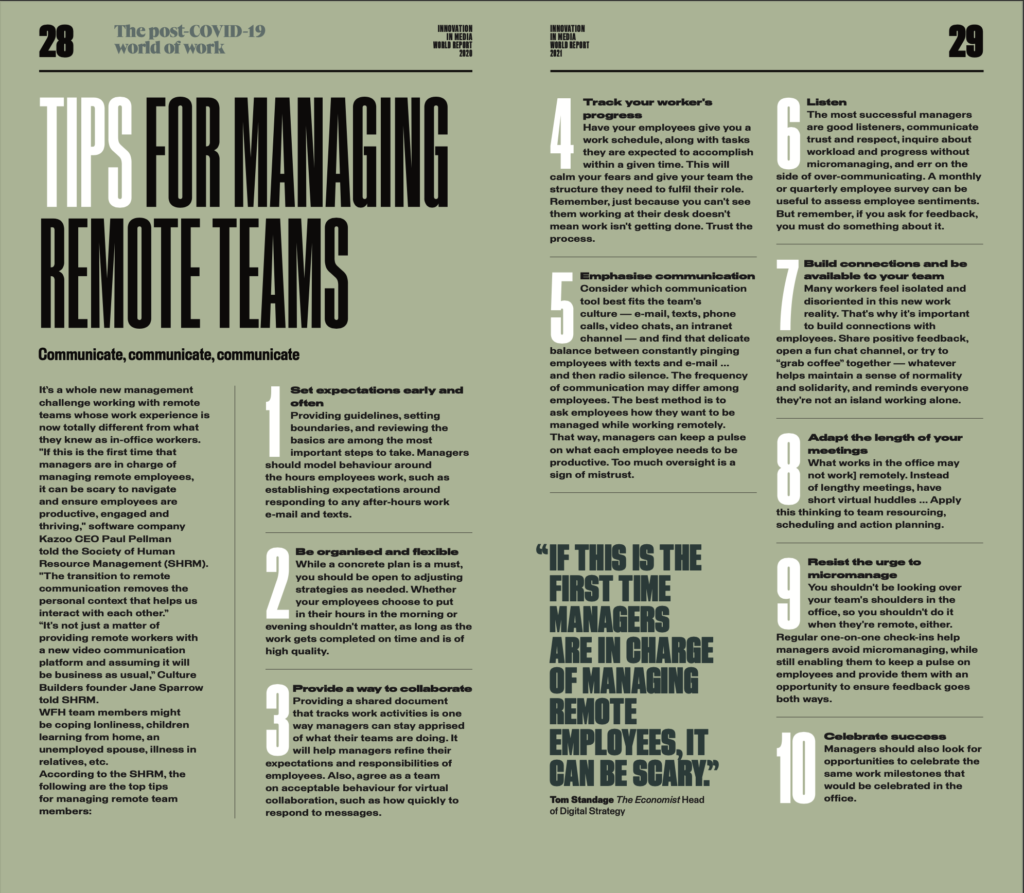
THE NEW MANAGEMENT CHALLENGE: REMOTE MEETINGS
A summary of R/GA survey results found that Zoom meetings resulted in “more voices being heard and there is better meeting etiquette.” One R/GA survey respondent wrote: “People tend to wait for others to finish their thoughts before speaking.” Another commented: “Working from home (WFH) actually forces our entire team to work more closely.” But the sudden and universal use of remote meetings has also uncovered serious roadblocks to inclusion, honesty, safety, group consensus, real communication, etc. “There are good reasons to worry,” wrote Harvard Business School professor Amy C. Edmondson and Harvard Business Publishing Moderator Gene Daley in the Harvard Business Review. “Detecting social cues or non-verbal agreement is nearly impossible. “Team members may feel isolated without the natural support of an ally nodding from across the table,” they wrote. “And distractions (emails, texts, doorbells, children, pets) are everywhere. If virtual meetings are inherently difficult, the current environment — the health and economic threats, the overwork, and the social unrest — makes them even more so.”
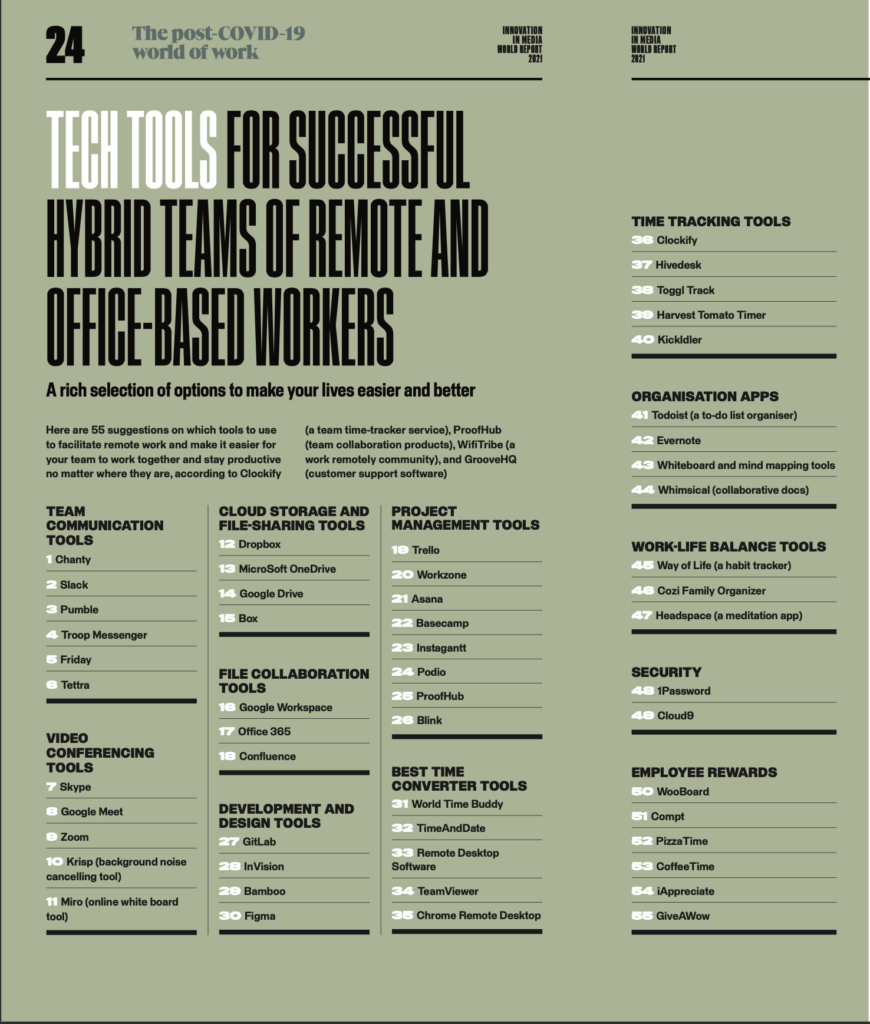
HOW TO SOLVE REMOTE MEETING PROBLEMS?
“The good news is that the very technology that thwarts candour and mutual understanding also offers ways to offset these losses,” wrote Edmondson and Daley.“In our work leading hundreds of virtual sessions, we’ve identified opportunities and risks associated with each of several common tools found in most online meeting platforms:
1. Hand-raise: “The hand-raise function helps people signal that they want to speak aloud,” they wrote. For taking polls, it’s not as effective as there is no anonymity.
2. Yes/No: “Typically a green checkmark and red X, this tool allows quick input from everyone,” they wrote. “The tool’s obvious limitation is that not all issues are binary in nature. For greater nuance in soliciting voice, poll and chat tools provide worthy alternatives.”
3. Polls: “Anonymous polls make it easy to express an opinion without fear of being singled out, and the results prompt thoughtful probing to dig into diverse views.”
4. Chat: “Allowing everyone to contribute at the same time in their own words, with their names tagged, the chat function lowers the threshold for participation,” wrote Edmondson and Daley. “At times, however, the sheer volume or length of entries leave some overlooked. “Setting norms about brevity can help, but chats also can distract from the spoken conversation. When it’s vital that everyone listen intently to what is being said, chat may need to be turned off.”
5. Breakout rooms: “Creating smaller virtual breakout rooms during large meetings allows small groups of, say, three to five people to talk more easily without muting and unmuting themselves, providing a more natural conversational experience than large virtual meetings,” wrote Edmondson and Daley. “Breakout rooms, with specific tasks or topics assigned to different groups, provide a psychologically safe space to test ideas and build relationships. When participants return to the large group, they find it easier to report ideas from the small group with the confidence that comes from testing and sharing perspectives in that relatively safer space.”
6. Video: “Seeing faces creates engagement, but too much visual stimuli (faces and backgrounds) can be distracting, and low bandwidth can add to visual disruptions,” they wrote. “Leaders may want to encourage view options in which one face is centre stage while speaking and others recede to the background. Other times, audio-only may be a better option for deep listening.” Edmondson and Daley suggest that after a virtual meeting, managers should reach out to talk to participants who were quiet during the session. “To replicate informal water cooler moments, managers can use text, phone, or email, to give reinforcing or redirecting feedback,” they wrote.
If we can get our heads in the right places and acquire the skills necessary to make this new hybrid world work, we’ll all be in a richer, better, more flexible, more nimble place. And our companies will be the better for it.


